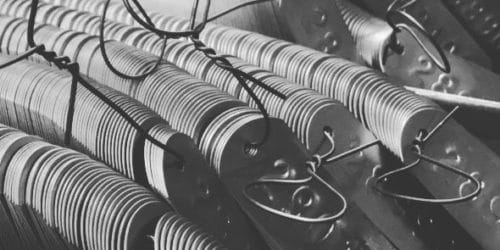It can be difficult to keep track of many pieces and parts when taking things apart and putting them back together. This is especially true when working on multiple projects at the same time, each with the same parts. An excellent solution to this problem is utilizing job tags.
What are Job Tags Used for?
Job tags are used for a wide range of tasks across countless industries. Their serialized numbers are used to make sure that every piece or part belonging to a job is accounted for.
For example, an auto repair shop might be working on 3 identical car engines at the time. They use job tags to separate the pieces out and number them. This keeps everything where it belongs, and the engines don’t end up mysteriously missing parts.
Job nameplates are used in equipment repair shops, manufacturing plants, paint shops, and more.
These applications expose the tags to tough environments, heat, water, paint, and general wear and tear. Durable metal tags are strong enough to hold up to the harsh conditions.
After the job is complete, the tags are usually disposed and replaced for the next job.
Embossing
The embossing process creates raised characters in the metal nameplate. The characters are clear and easy to read. As there is no ink or printing to wear off, this process is perfectly suited for tough jobs.
They are made to be scratched, worn, heated, exposed to weather, etc.
In addition, raised characters remain legible even when they get partially covered. For example, tags in a paint shop are going to get accidentally painted over. The important thing is that they are still able to be read.
Serialized Numbers
Job tags are produced with serialized numbers. What makes them stand out from other serialized tags is that they are created in sets of each number.
For example, ten job nameplates that have the number “1”, ten nameplates with the number “2”, etc. As opposed to 100 nameplates, each with a different number (1-100).
Another unique feature of job nameplates is that most of the time they only include numbers. It is not necessary to add a company logo or other text information.
Material & Size
These tags are most commonly manufactured using aluminum or cold rolled steel. These materials are more cost effective for job tags. This is important for tags that are not going to be used long term.
While they are cost effective, they don’t sacrifice durability. Aluminum and cold rolled steel plates are still highly durable, and able to withstand all of the elements and environments they are exposed to.
Most nameplate sizes vary by application, location, and industry. Job nameplates are one that have a common size. They are usually a 1” x 3” tag, ½ inch characters, with semi round ends, and one hole.
While those specs might be the standard, custom tag manufacturers are able to produce your job tags to any specs you need. For example, another common size is .625” x 2.5”.
Wrap-Up
If you find yourself getting parts and pieces mixed up, having slow or confusing processes, or simply want better organization, job tags are an excellent solution. They provide a simple and effective way to keep track of your processes. Their ability to be cost effective as well as stay durable make them a perfect solution.
